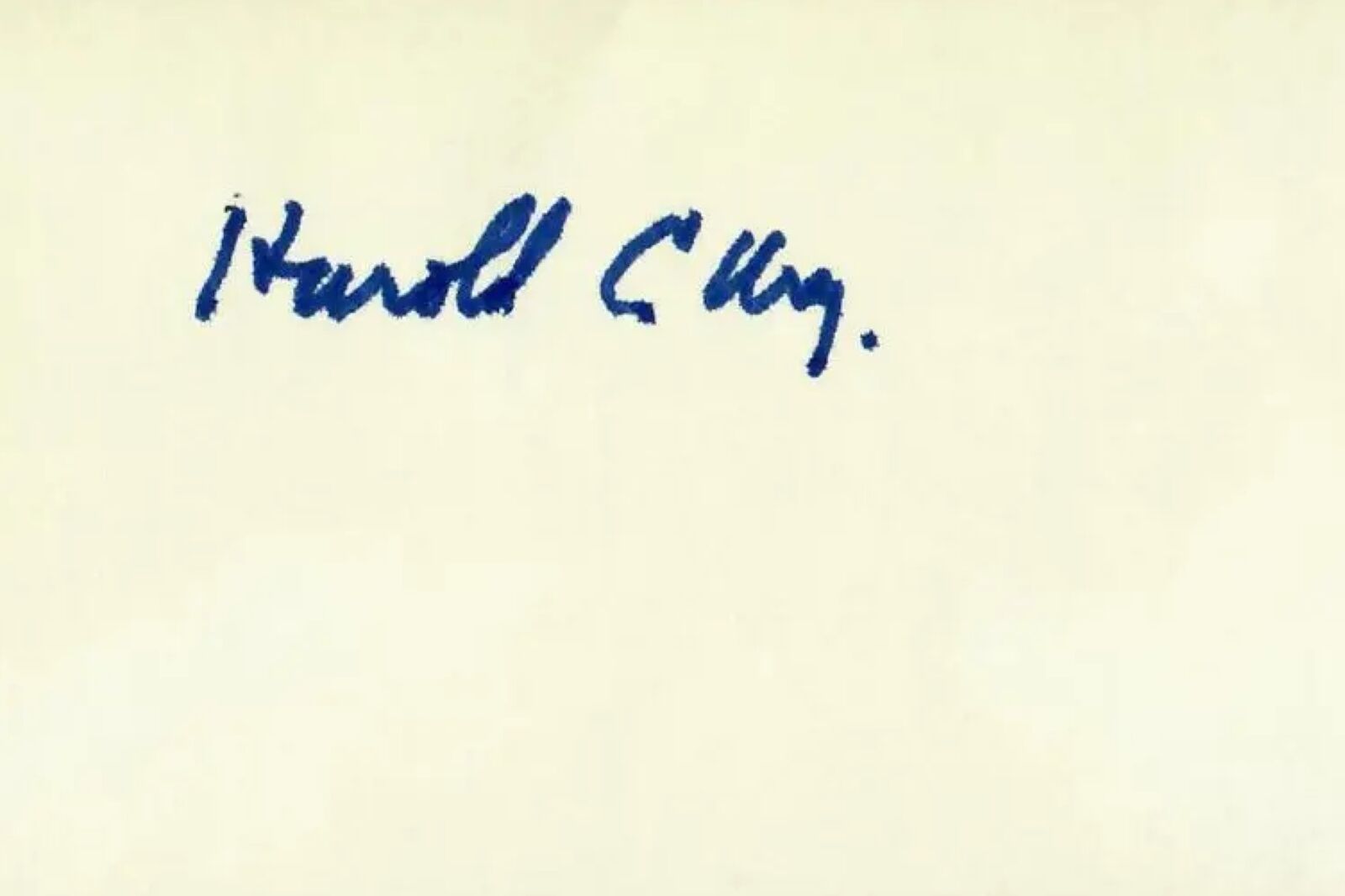\"Nobel Prize in Chemisrty\" Horold C Urey Hand Signed 3X5 Card Todd Mueller COA

When you click on links to various merchants on this site and make a purchase, this can result in this site earning a commission. Affiliate programs and affiliations include, but are not limited to, the eBay Partner Network.
\"Nobel Prize in Chemisrty\" Horold C Urey Hand Signed 3X5 Card Todd Mueller COA:
$199.99
Official PayPal Conversion Rates Add Currency Converter To Your Items
ES-1954
Harold Clayton Urey(/ˈjʊəri/YOOR-ee; April 29, 1893 – January 5, 1981) was an Americanphysical chemistwhose pioneering work onisotopesearned him theNobel Prize in Chemistryin 1934 for the discovery ofdeuterium. He played a significant role in the development of theatom bomb, as well as contributing to theories on thedevelopment of organic life from non-living matter.Born inWalkerton, Indiana, Urey studiedthermodynamicsunderGilbert N. Lewisat theUniversity of California, Berkeley. After he received hisPhDin 1923, he was awarded a fellowship bythe American-Scandinavian Foundationto study at theNiels Bohr InstituteinCopenhagen. He was a research associate atJohns Hopkins Universitybefore becoming an associate professor of Chemistry atColumbia University. In 1931, he began work with the separation of isotopes that resulted in the discovery of deuterium. During World War II, Urey turned his knowledge of isotope separation to the problem ofuranium enrichment. He headed the group located at Columbia University that developed isotope separation usinggaseous diffusion. The method was successfully developed, becoming the sole method used in the early post-war period. After the war, Urey became professor of chemistry at theInstitute for Nuclear Studies, and later Ryerson professor of chemistry at theUniversity of Chicago. Urey speculated that the early terrestrialatmospherewas composed ofammonia,methane, and hydrogen. One of his Chicago graduate students wasStanley L. Miller, who showed in theMiller–Urey experimentthat, if such a mixture were exposed to electric sparks and water, it can interact to produceamino acids, commonly considered the building blocks of life. Work withisotopes of oxygenled to pioneering the new field ofpaleoclimaticresearch. In 1958, he accepted a post as a professor at large at the newUniversity of California, San Diego(UCSD), where he helped create the science faculty. He was one of the founding members of UCSD\'s school of chemistry, which was created in 1960. He became increasingly interested in space science, and whenApollo 11returnedmoon rocksamples from the moon, Urey examined them at theLunar Receiving Laboratory. Lunar astronautHarrison Schmittsaid that Urey approached him as a volunteer for a one-way mission to the Moon, stating \"I will go, and I don\'t care if I don\'t come back.\"Harold Clayton Urey was born on April 29, 1893, inWalkerton, Indiana, the son of Samuel Clayton Urey,a school teacher and a minister in theChurch of the Brethren,and his wife, Cora Rebecca née Reinoehl. He had a younger brother, Clarence, and a younger sister, Martha. The family moved toGlendora, California, after Samuel became seriously ill withtuberculosis, in hopes that the climate would improve his health. When it became clear that he would die, the family moved back to Indiana to live with Cora\'s widowed mother. Samuel died when Harold was six years old. Urey was educated in anAmishgrade school, from which he graduated at the age of 14. He then attended high school inKendallville, Indiana. After graduating in 1911, he obtained a teacher\'s certificate fromEarlham College,and taught in a small school house in Indiana. He later moved to Montana, where his mother was then living, and continued to teach there.Urey entered theUniversity of MontanainMissoulain the autumn of 1914. Unlike Eastern universities of the time, the University of Montana was co-educational in both students and teachers.Urey earned aBachelor of Science(BS) degree inzoologythere in 1917.As a result of theUnited States entry into World War Ithat same year, there was strong pressure to support the war effort. Urey had been raised in a religious sect that opposed war. One of his professors suggested that he support the wartime effort by working as a chemist. Urey took a job with theBarrett Chemical CompanyinPhiladelphia, makingTNT, rather than joining the army as a soldier.[4]After the war, he returned to theUniversity of Montanaas an instructor inchemistry.An academic career required a doctorate, so in 1921 Urey enrolled in aPhDprogram at theUniversity of California, Berkeley, where he studiedthermodynamicsunderGilbert N. Lewis.His initial attempt at a thesis was on theionizationofcesiumvapor. He ran into difficulties, andMeghnad Sahapublished a better paper on the same subject. Urey then wrote his thesis on the ionization states of an ideal gas, which was subsequently published in theAstrophysical JournalAfter he received his PhD in 1923, Urey was awarded a fellowship bythe American-Scandinavian Foundationto study at theNiels Bohr InstituteinCopenhagen, where he metWerner Heisenberg,Hans Kramers,Wolfgang Pauli,Georg von Hevesy, andJohn Slater. At the conclusion of his stay, he traveled to Germany, where he metAlbert EinsteinandJames Franck.On returning to the United States, Urey received an offer of aNational Research Councilfellowship toHarvard University, and also received an offer to be a research associate atJohns Hopkins University. He chose the latter. Before taking up the job, he traveled toSeattle, Washington, to visit his mother. On the way, he stopped byEverett, Washington, where he knew Dr. Kate Daum, a colleague from the University of Montana. Dr. Daum introduced Urey to her sister, Frieda. Urey and Frieda soon became engaged. They were married at her father\'s house inLawrence, Kansas, in 1926.The couple had four children:Gertrude Bessie (Elizabeth), born in 1927; Frieda Rebecca, born in 1929; Mary Alice, born in 1934; and John Clayton Urey, born in 1939. At Johns Hopkins, Urey andArthur RuarkwroteAtoms, Quanta and Molecules(1930), one of the first English texts on quantum mechanics and its applications to atomic and molecular systems. In 1929, Urey became an associate professor of Chemistry atColumbia University, where his colleagues includedRudolph Schoenheimer, David Rittenberg, and T. I. Taylor.
\"Nobel Prize in Chemisrty\" Horold C Urey Hand Signed 3X5 Card Todd Mueller COA:
$199.99
